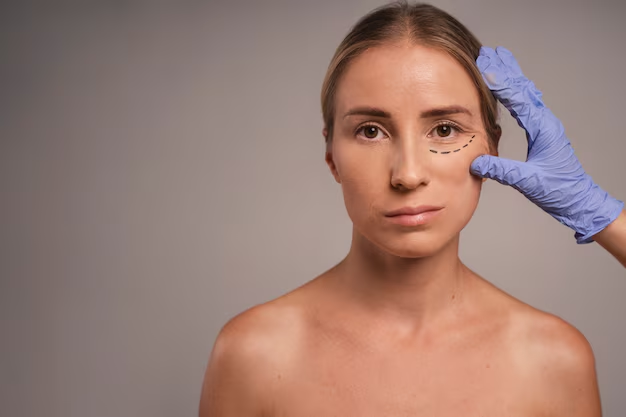In pursuing a more youthful appearance, the eyes often take center stage. However, traditional surgical methods for eyelid rejuvenation may seem daunting to some.
Fortunately, advancements in cosmetic dermatology offer a comprehensive range of non-surgical options. From dermal fillers to laser treatments, individuals now have precise and effective alternatives to restore youthful vitality to their eyelids without going under the knife.
Let’s check out these non-surgical techniques here!
What are Non-Surgical Eyelid Procedures?
Non-surgical eyelid procedures encompass a diverse range of cosmetic treatments aimed at rejuvenating the appearance of the eyelids without resorting to surgical intervention. Non-surgical procedures target various concerns, such as sagging skin, wrinkles, fine lines, puffiness, and dark circles, helping individuals achieve a more youthful and refreshed look.
6 Common Non-Surgical Eyelid Procedures
Here are some standard non-surgical blepharoplasty procedures:
1. Dermal Fillers
Injectable dermal fillers, typically composed of hyaluronic acid or collagen-stimulating substances, restore volume and contour to the eyelids. By strategically injecting fillers into areas with hollowing or sagging, such as the tear troughs or the upper eyelids, practitioners can achieve a smoother and more youthful appearance.
2. Botox
Botox, short for Botulinum toxin, is a popular non-surgical cosmetic treatment used to reduce the appearance of wrinkles and fine lines. Botox temporarily paralyzes the underlying muscles, which smooths dynamic wrinkles, such as crow’s feet and frown lines, resulting in a more youthful and refreshed appearance.
Botox is FDA-approved and widely recognized for its safety and effectiveness in rejuvenating the face.
3. Laser Skin Resurfacing
Laser skin resurfacing is a non-surgical cosmetic procedure that uses laser technology to improve the skin’s texture, tone, and appearance. During the treatment, a laser device delivers concentrated beams of light to the targeted areas, creating controlled thermal damage to the skin’s surface and stimulating collagen production.
There are two main types of laser skin resurfacing:
- Ablative Laser Resurfacing: This type of laser removes thin layers of skin, effectively resurfacing the skin and reducing the appearance of wrinkles, scars, and other imperfections
- Non-Ablative Laser Resurfacing: Unlike ablative lasers, non-ablative lasers do not remove the outer layer of skin. Instead, they penetrate deeper into the skin to stimulate collagen production and promote tissue regeneration.
4. Chemical Peels
Chemical peels involve the application of a chemical solution to the skin, which exfoliates the outer layers and promotes cell turnover.
Peels can improve the appearance of fine lines, wrinkles, and pigmentation issues around the eyes, leading to smoother and more radiant skin.
5. Platelet-Rich Plasma (PRP) Therapy
PRP therapy utilizes the patient’s blood, which is processed to extract platelets rich in growth factors. When injected or applied topically, PRP stimulates tissue regeneration, collagen production, and overall skin rejuvenation. It can effectively address dark circles, under-eye hollows, and fine lines.
6. Micro-needling
Microneedling, also known as collagen induction therapy, is a non-surgical cosmetic procedure involving using fine needles to create controlled micro-injuries in the skin.
During a microneedling session, a specialized device, such as a dermaroller or a microneedling pen, is gently rolled or pressed onto the skin, causing tiny punctures. The micro-injuries trigger the skin’s repair mechanism, prompting the production of new collagen and elastin fibers.
As the skin heals, it becomes firmer, smoother, and more radiant, with improved texture and tone.
Microneedling can address a variety of skin concerns, including:
- Fine Lines and Wrinkles: By stimulating collagen production, microneedling can reduce the appearance of fine lines and wrinkles, particularly around the eyes, mouth, and forehead.
- Acne Scars: Microneedling can help minimize the appearance of acne scars by breaking down scar tissue and promoting the growth of new, healthy skin cells.
- Uneven Skin Texture: Microneedling can improve the skin’s texture by smoothing out rough patches and minimizing pore size.
- Hyperpigmentation: Microneedling can fade dark spots and hyperpigmentation by promoting skin cell turnover and encouraging new, evenly pigmented skin production.
- Skin Laxity: Microneedling can tighten loose or sagging skin by stimulating collagen and elastin production, resulting in a firmer, youthful appearance.
Conclusion
Non-surgical eyelid rejuvenations present a compelling option for individuals seeking to refresh their appearance with precision and minimal invasiveness. The procedures we’ve listed above offer customized solutions tailored to individual needs, providing natural-looking results without the downtime and risks associated with surgery.

